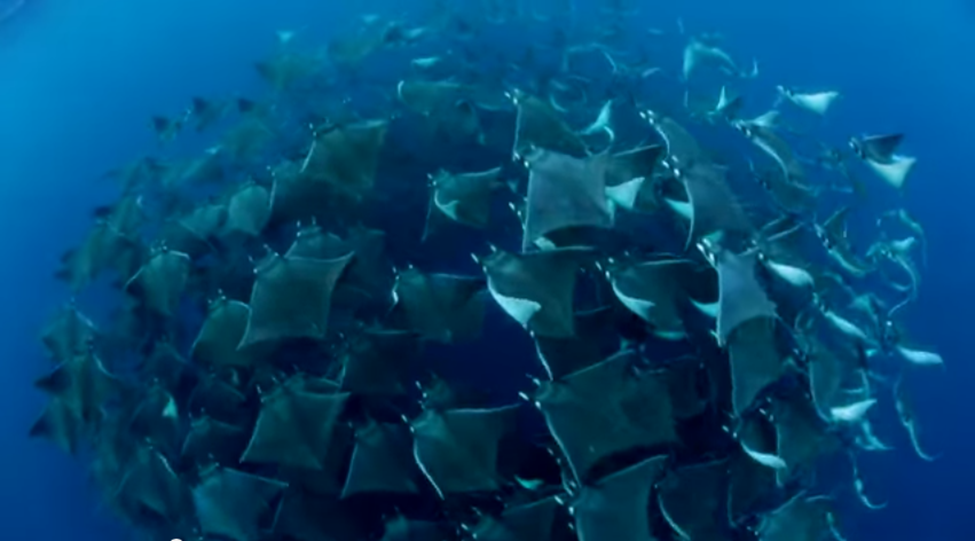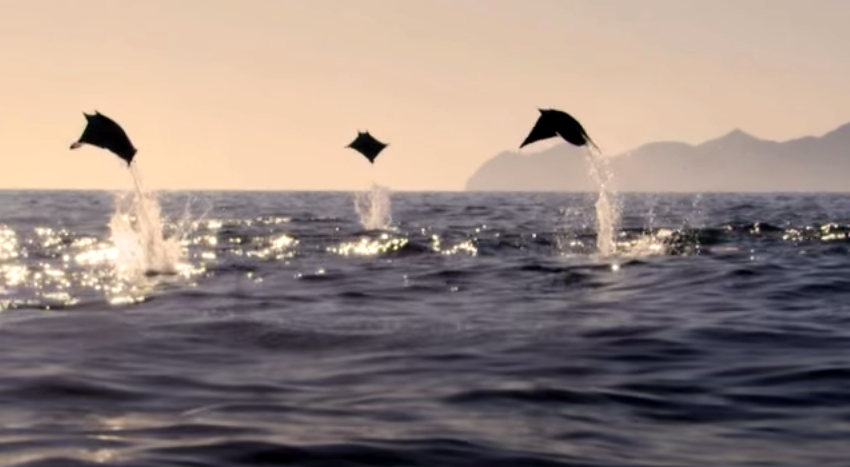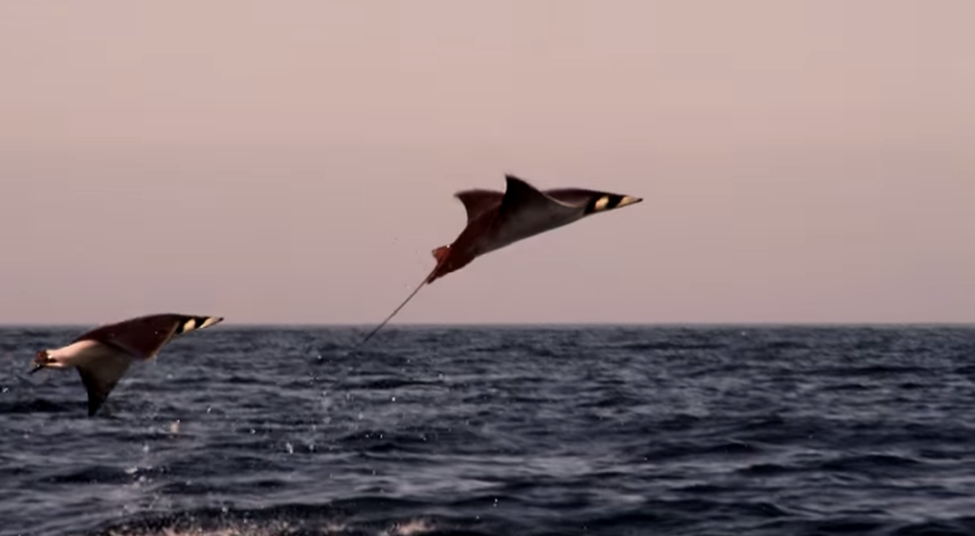Our Featured Video of the Week was filmed by BBC in the Gulf of California, Mexico, as part of a new BBC / Discovery coproduction television series. In this incredible video, you see mobula rays, sometimes called “flying rays” leaping effortlessly from the sea while gathered in groups of hundreds. Why do they do it? Scientists are still completely unsure of the reason.
A mobula ray has a flat body and pectoral fins similar to wings, which makes it easy for them to glide through the water and fly through the air. These rays can launch more than two metres (6ft 6ins) in the air, but their landing is not as graceful with a large splash and a belly-flop back into the water.
Joshua Stewart, from the Gulf of California Marine Program at Scripps Institution of Oceanography says, “Sitting in a boat in the midst of these aggregations is akin to sitting in a pot of popcorn as the kernels explode into the air. Everywhere you look mobulas are leaping out of the water and landing with a loud smack, sometimes just a couple of meters from you.”
“The mobulas launch themselves straight up out of the water at top speed, and most often they land flat on their belly. However, sometimes they seem to lose control and do flips and twists before reconnecting with the water.”
“While the jumping behaviour may occur during feeding or courting events, we believe that the most likely purpose of the jumping behavior is communication, which could have a variety of applications in different behavioral scenarios. However it is very likely that mantas, mobulas and eagle rays jump for a variety of reasons.”
It is rare for scuba divers to witness this activity because mobulas seem to be pretty skittish around divers. Have you been lucky enough to witness this behavior?
For more details about this film visit Life through the Lens: Watch these giant rays fly
Or for more information on learning to scuba dive, visit our Learn To Dive page.


